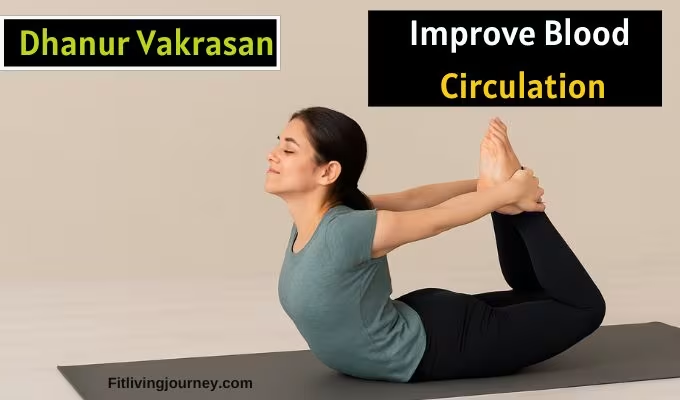Dhanur Vakrasan
Dhanur Vakrasan (Bow Pose)
Today, we are going to learn Dhanur Vakrasan, also known as the bow pose.
This posture resembles a bow and brings a beautiful shape to the body.
It brings not only flexibility but also a certain sturdiness — a quality everyone should have in life.
The posture exercises the core and is very beneficial.
Method of Doing Dhanur Vakrasan
1. Lie down on your stomach, with both hands on the side.
2. Try to touch your forehead to the ground, and keep your toes stretched outwards.
3. Now, fold your legs and hold your ankles.
4. Touch your chin to the ground.
5. Slowly lift your head up, along with your legs.
6. Your body will now form a bow shape.
7. Raise your body as high as possible.
8. Try to keep your knees as close to each other as possible.
9. After holding this posture for six seconds, inhale and hold.
10. Then, slowly release your posture gently — no jerks.
11. Make your legs straight, bring your head down, and relax.
Repeating the Posture with Rhythm
Now, do this posture with yoga rhythm:
- Breathe in.
- Fold both legs.
- Hold your ankles.
- Inhale and raise your whole body up.
- Stay in the pose for six seconds.
- Expand your chest, feel your breath, and hold.
- The spine is exercised, the chest expanded.
- After six seconds, gently release the body.
- Slowly go down, touch your chin to the ground, then forehead, and finally legs back to normal.
Benefits of Dhanur Vakrasan
This bow pose has tremendous benefits:
1. The body balances on the abdominal/naval region, which strengthens abdominal visceria muscles.
2. It helps in improving digestion.
3. The entire spine gets exercised — effective for spondylosis and ankylosing conditions.
4. It corrects spinal abnormalities, being a backward-bending asan.
5. Expands the chest, exercises intercostal muscles, and boosts the respiratory system.
6. It strengthens abdominal muscles, pelvic muscles, leg muscles, and calf muscles.
7. The slow, rhythmic breathing improves mind control, concentration, memory, and willpower.
8. Energy levels rise, bringing positivity.
Precautions and Limitations
- People with hernia, heart problems, or high blood pressure should avoid it.
- Avoid if you have any spinal injury.
- Those with stiff neck, shoulder issues, or severe osteoarthritis should not do it.
- Avoid in case of ulcers, as the abdomen is weak.
- Pregnant women must avoid this asan.
- Men with protruded belly should not practice it — it may cause back pain due to immense pressure.
Conclusion
During the day, we often bend forward. So, bending backward is essential to bring balance in life.
This is a beautiful posture. Do it and benefit from it — but always know your limitations.
FAQs About Dhanur Vakrasan
1. What is the main benefit of Dhanur Vakrasan?
Ans. It strengthens the spine, abdominal muscles, and improves digestive and respiratory systems.
2. Who should avoid Dhanur Vakrasan?
Ans. People with hernia, heart issues, spinal injuries, high blood pressure, ulcers, or pregnant women should avoid it.
3. How long should one hold the Dhanur Vakrasan posture?
Ans. Hold the posture for six seconds with rhythmic breathing and then release gently.
4. Why is backward bending important in yoga?
Ans. Backward bends like Dhanur Vakrasan help counteract the forward bending we do daily, maintaining balance and spinal health.
5. Can this pose improve mental strength?
Ans. Yes, it enhances concentration, memory, and willpower through controlled breathing and posture.
4 Natural Remedies for Dark Circles That Actually Work at Home

